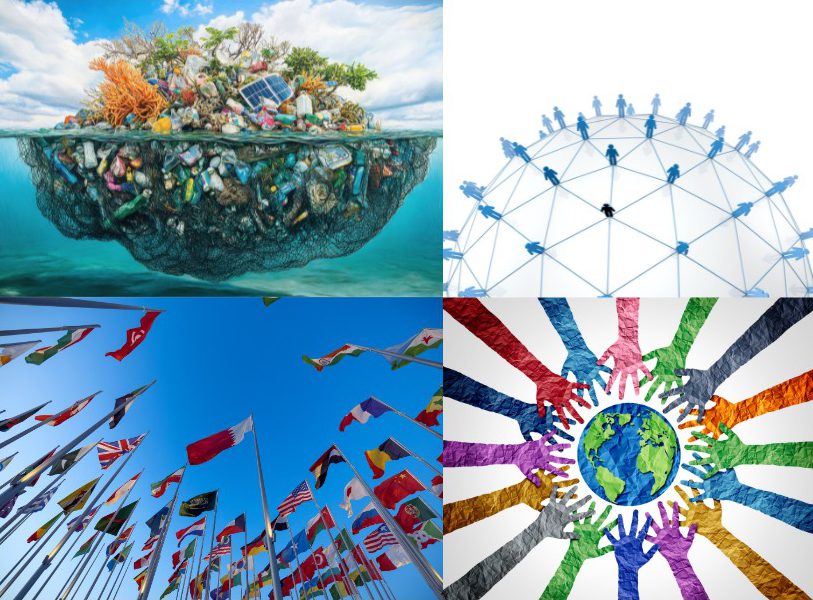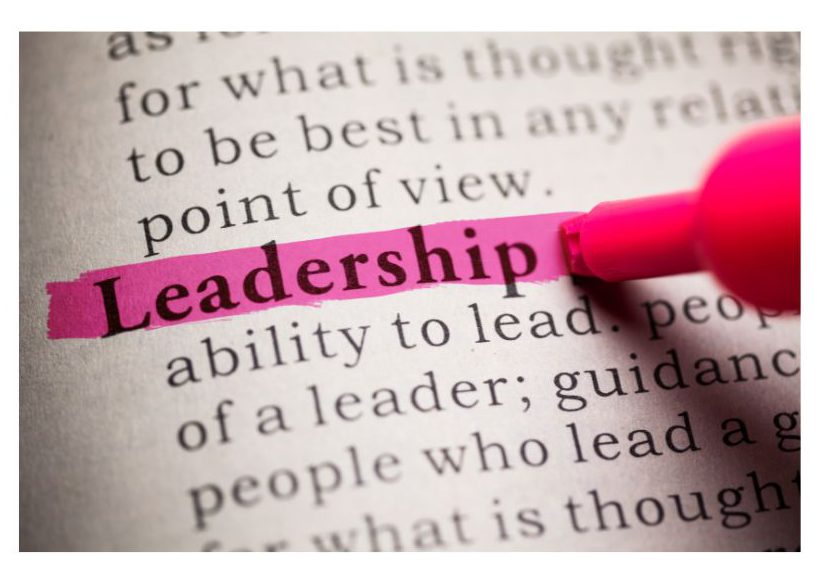
Start local, think global: Social entrepreneurship

Ever feel like the world’s problems are just too big? Climate change, poverty, a lack of clean water, poor educational systems… It’s easy to feel overwhelmed, throw up your hands and think, “Nothing I do will make a difference.” Guess what? That belief is a little inaccurate. Right now, you have the power to make a difference. And the coolest part? You don’t have to fly to a remote village or earn a degree to start. You can start right in your own backyard, school, or neighborhood, with social entrepreneurship.
Championing change doesn’t require grand gestures. Every small, local action can create a ripple effect that touches lives far beyond what you might imagine. You can think global by starting local.
Start in your community
Your community is the perfect training ground and laboratory for change. You can learn the ropes, gain experience, and build confidence before taking on bigger challenges.
Does your school require mandated volunteer hours for graduation or as a club requirement (like National Honor Society)? Instead of ticking them off as just one more thing you have to do, invest in them. The right local project could become a seed for something much larger.
- A food drive that fills more than local pantries
Organizing a food drive at your school is a classic event. But what if you took it a step further? Collaborate with your local food bank to expand a collection’s reach. Then, once you’ve perfected your system, connect with other schools in your district. Create a network to share best practices and resources.
Imagine if every school in your state ran a coordinated food drive simultaneously! You could even research food waste in your community and advocate for policies that redirect edible surplus from grocery stores or restaurants to those in need.
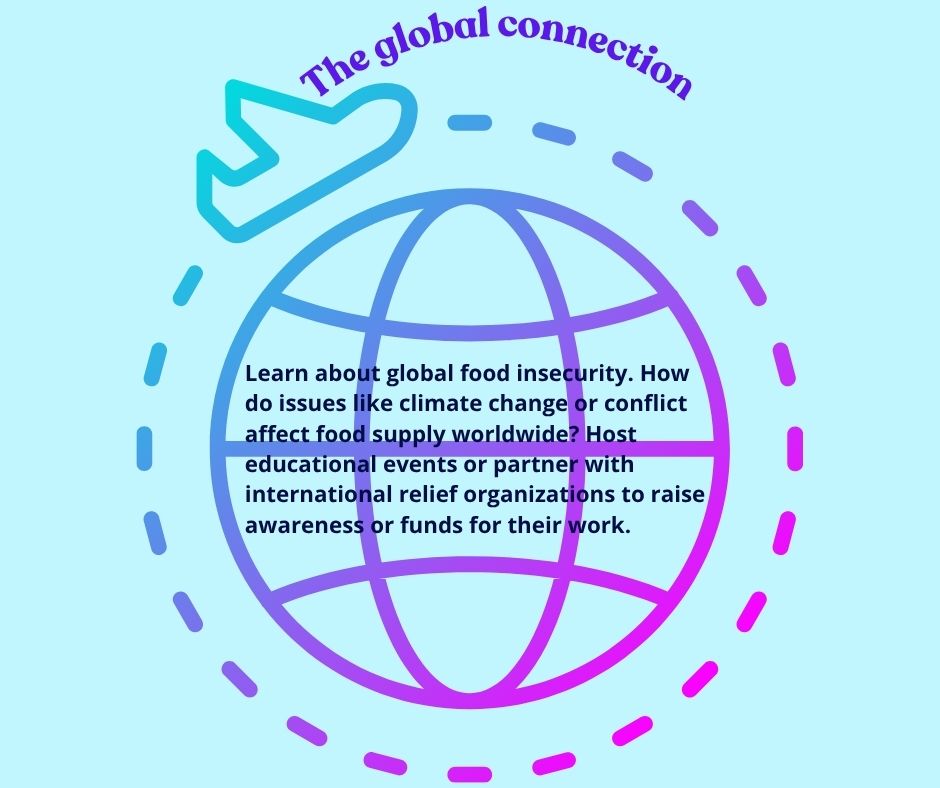
- Park cleanups with a planet-sized purpose
Collecting trash in the local park not only makes it nicer for everyone but can also spark a larger environmental movement. If you regularly clean a specific park or natural area, you’ll beautify the space and protect local wildlife. Scale up your efforts by researching the source of the litter. Is it single-use plastics? Something else? Take pictures and collect data, and present your findings to your local government or businesses. Advocate for better recycling programs or policies limiting certain types of waste. Team up with other youth groups and organizations to lobby for statewide environmental initiatives.
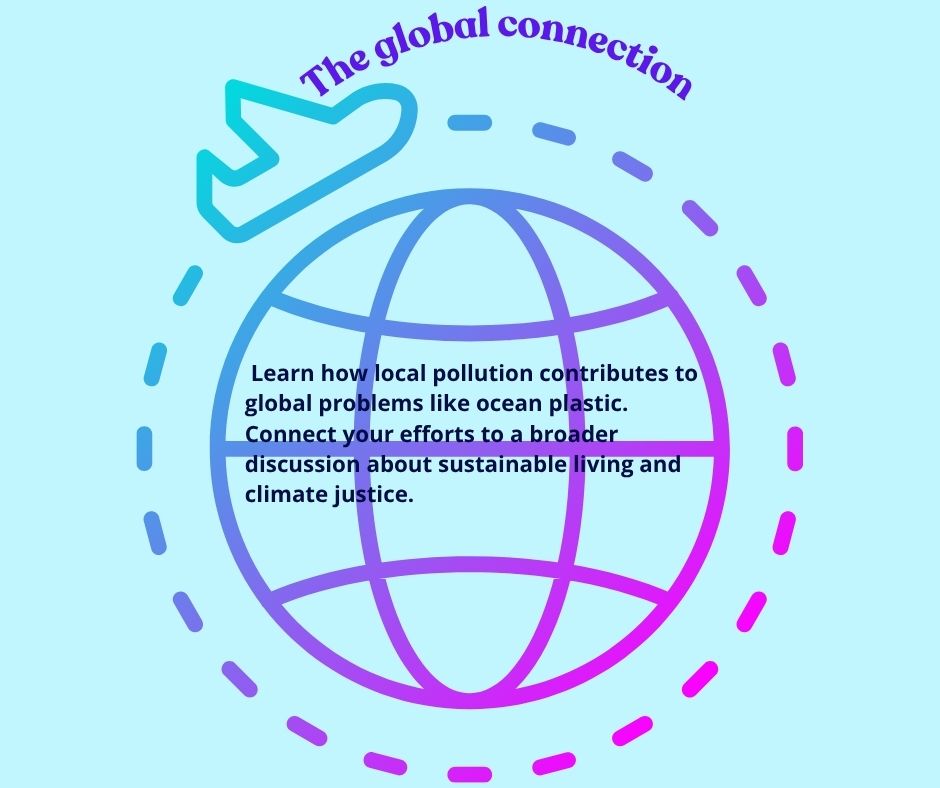
- Tutoring programs that empower beyond the classroom
Helping younger kids with their homework, immigrant families learning English, or those who are just having a hard time with their classes, is incredibly rewarding. You could set up a tutoring service at your school or local library. Kick it up a notch by working with a teacher-mentor to develop a curriculum or training materials and reach out to other students at your school and other local high schools to join your program.
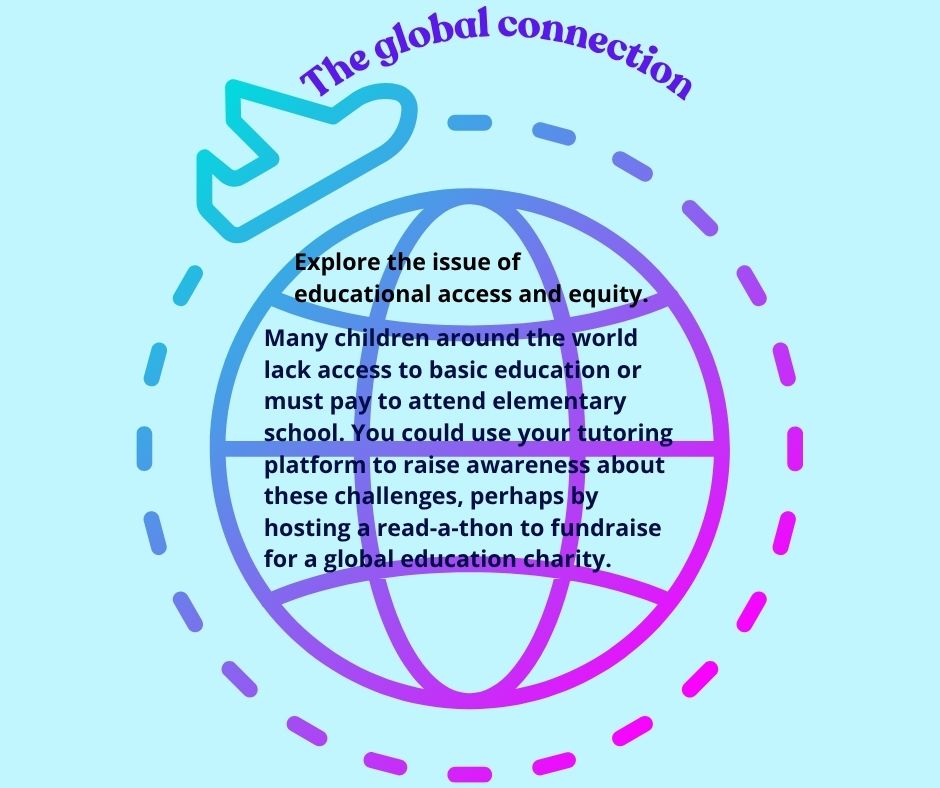
The key here? Start small, get good at it, work out the bugs, and then look for ways to replicate, expand, and connect your efforts to bigger issues.
Launching a social impact project or nonprofit in high school
Dreaming bigger than joining an existing project? Great! High school is the perfect time to launch your own initiative. You’ve got energy, ideas, and (hopefully) a supportive school environment.
Identify your passion. What do you want to do? What are you so passionate about that you could talk about it for hours? It could be anything: mental health awareness, animal welfare, menstrual products for girls, supporting homeless veterans… the sky’s the limit. Once you’ve determined what speaks to you, identify a specific problem related to it in the community.

Research, research, research. Don’t reinvent the wheel. See what others are doing. Do local organizations already address this problem? How can your idea complement their work or fill a gap?
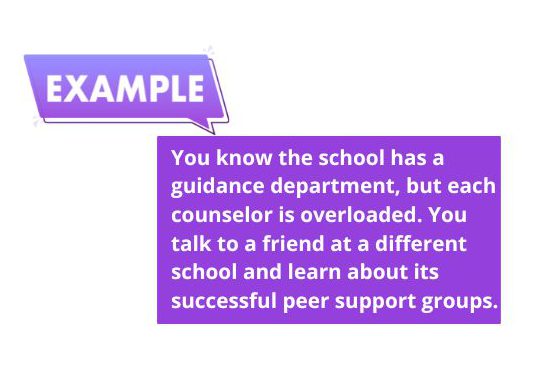
Brainstorm solutions. Get creative here as you think about something achievable you could do to address the problem.
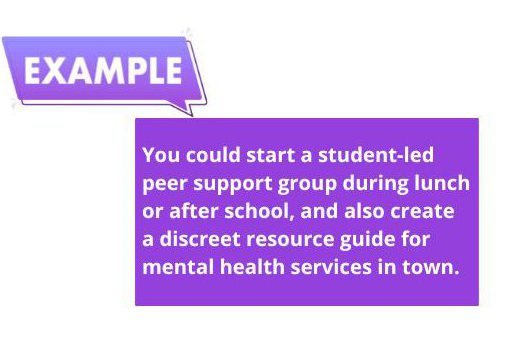
Build your dream team and find a mentor. Don’t go it alone. Find friends who share your passion. And — this is the crucial part — find an adult ally. A teacher, parent, community leader, or administrator can offer guidance, open doors (like getting permission to use a classroom), connect you with external resources, and help you navigate other challenges.
Develop a plan. Your plan doesn’t have to be complicated (in fact, simpler is usually better, especially to start). Define your goals. Determine the steps you need to take and resources you need to start (money, space, adult supervision). Make a basic timeline.
Launch and learn. Businesses often conduct “lessons learned” sessions after an event or a product or service rollout. You can do the same. You don’t need to wait for perfection — just start. You’ll learn lots along the way. Be prepared to adapt, make mistakes, and celebrate every victory, no matter how big or small.
Think “nonprofit.” Starting with an informal club or project under your school’s umbrella is one option. If your project really takes off and you want to do more fundraising, receive grants, or put a more formal structure in place, you could consider forming a 501(c)(3) nonprofit (if you’re in the U.S.). Ask for help with this bigger, legal step. ]
What is social entrepreneurship?
We’ve talked about activism and service, but what if you could use the power of business to solve social problems? That’s social entrepreneurship. Social entrepreneurs establish an enterprise — a company, foundation, or program — with a main goal of solving a social or environmental problem or driving social change. The difference between a traditional business and a social enterprise? The bottom line.
- A traditional business’s primary bottom line is making a profit.
- A nonprofit’s primary bottom line is its mission — achieving a social goal with funding generated through donations, grants, or both.
- A social enterprise’s primary bottom line is social impact, but it uses a sustainable business model to achieve it. The income generated from selling a product or service covers the costs and allows the organization to grow its impact.
Could you be a social entrepreneur?
If you’re interested in business, design, and making a difference, welcome to a potential career path. Here’s how this journey could look.
- Identify a market failure related to your problem. Is there a social need not being met because no one will profit from it or because existing solutions are too expensive or inefficient?

- Develop a sustainable solution. Create a product or service that generates revenue and then commit to using that revenue to further your social goal.

- A high school example. You could start a small business selling ethically sourced coffee or baked goods. Instead of pocketing the profit, you commit to donating 50% of the income to fund the peer-support mental health group you started, ensuring its longevity without relying entirely on financial help from the school budget or through small fundraisers. With this business, you’ve created a sustainable funding stream for a social program.
Social entrepreneurship relies on innovation, using market forces and business strategies to make your positive impact a permanent, self-funded fixture in the world.
Using social media for activism and awareness
If you’re already a pro with social media, why not harness its power for the greater good? Sure, you can still share memes and keep up with friends and family, but use it as a tool for activism and stretch your reach even further.
Choose your platform(s) wisely. Different platforms excel at different things.
- Instagram/TikTok are great for creating visually engaging content, such as short videos and infographics, and for reaching younger audiences. These platforms are perfect for quick awareness campaigns or showing the behind-the-scenes of your project.
- X is good for real-time news, engaging with journalists or policymakers, and sharing links to longer articles and petitions. Use it to share concise, impactful messages.
- Facebook is definitely a platform for older generations, but it’s still strong for community groups, events, and reaching Millennials and even older Gen Xers.
Craft a clear, compelling message. What do you want people to know? What do you want them to do? You need a strong call to action (CTA).
- Instead of: “Plastic pollution is bad. Please recycle.”
- Try: “Over 5,000 lbs of plastic waste clog our local river. ACTION: Sign the petition in my bio by Friday, urging the city to invest in commercial composting options! #RiverRescue #ThinkGlobalActLocal #SaveTheSusequehanna
Be a curator, not just a creator. You don’t have to generate all the content yourself, especially if you’re balancing classes and homework, maybe a part-time job, and other extracurriculars. Follow and share trusted, credible sources. Amplify the voices of those directly affected by the issues you care about (people on the ground, experts, scientists). Sharing quality information is a form of activism. Credibility is your currency.
Balance awareness and action. It’s easy to fall into “slacktivism” (liking and sharing without taking real action). Your posts should inspire real-world steps: sign a petition, attend a local meeting, volunteer for a couple of hours, support a social enterprise, or write an email to your school board.
Stay safe and ethical. Never post pics or info about others without their permission. Be mindful of your digital footprint. When arguing a point, stick to the facts and maintain a respectful, professional tone, even if you’re passionate. (It’s okay to walk away and take a few deep breaths before returning, too). Remember: Online bullying and misinformation will undermine your cause.
Start your global journey today
Whether you launch a local nonprofit club, start a social enterprise to fund it, or use your phone to rally a flash mob of volunteers for a park cleanup, congrats! You’re now part of the solution.
The biggest mistake you can make is waiting for permission — or until you’re “qualified.” Your passion is your qualification. Start small. Get comfortable with your local domain. And remember that the water bottle you divert from a landfill in your town is a small victory for the ocean across the world.
Blog Categories
- Career Advice
- College Admissions
- Colleges & Universities
- Financial Aid and Scholarships
- For Counselors
- For Parents
- For Students
- Gap Years
- Mental Health and Wellness
- Online Learning
- Performing and Visual Arts
- STEM Majors and More
- Summer Programs
- Teen Volunteering
- Trade & Vocational Schools
- Tutoring & Test Prep

Organization with listings on TeenLife? Login here
Register for Free
We’re here to help you find your best-fit teen-centered academic and enrichment opportunities.
Forgot Password
"*" indicates required fields

